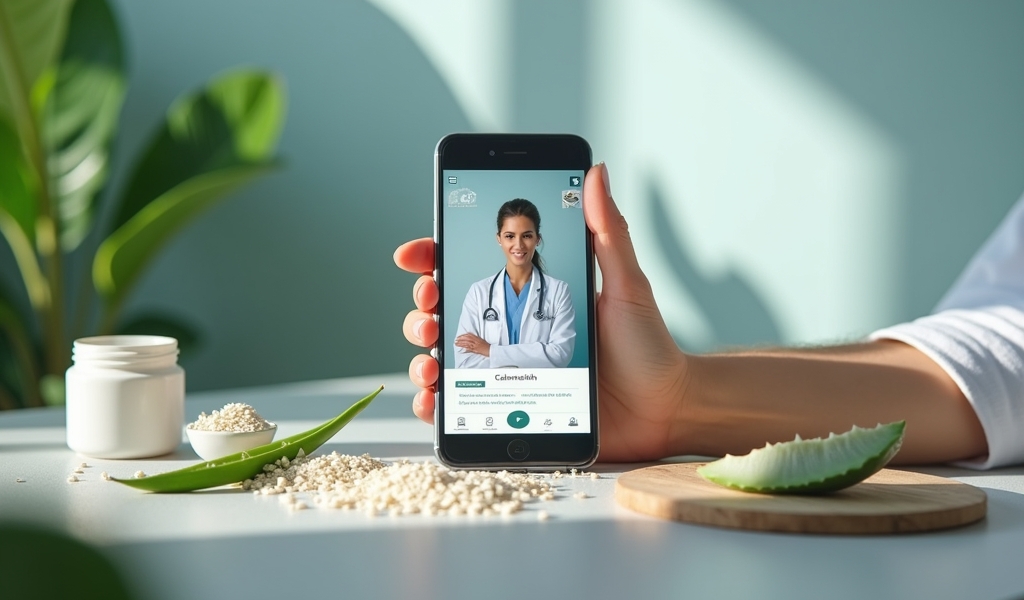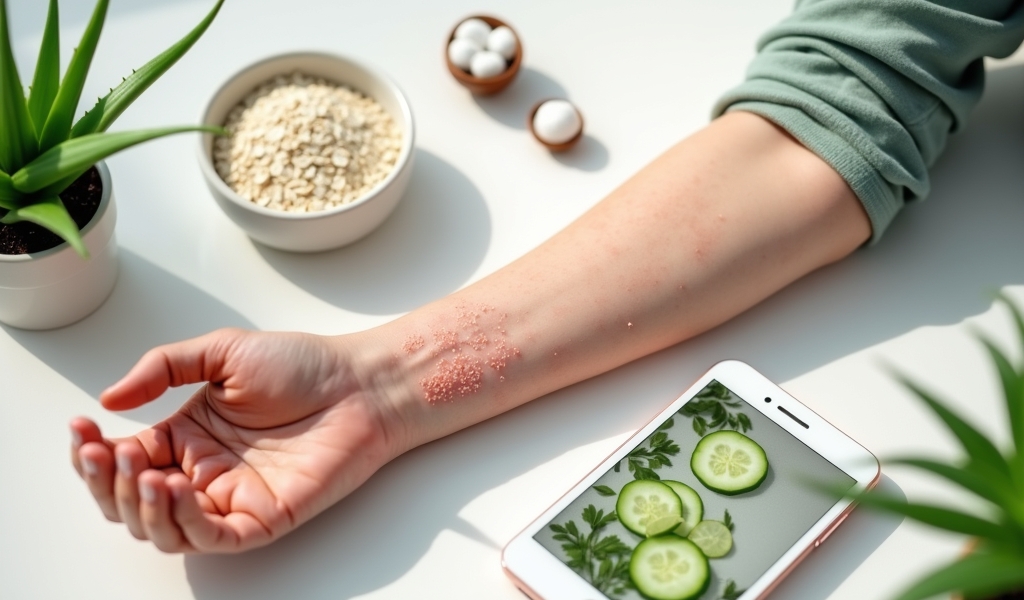Overview
Online treatment for poison ivy rash offers five effective relief methods: telemedicine consultations, recommended OTC solutions, natural remedies, prescription medications through virtual care, and prevention strategies with follow-up support. This comprehensive digital healthcare approach provides convenient, accessible, and cost-effective treatment options for managing symptoms and preventing future outbreaks, though severe reactions still require emergency medical attention.
Table of Contents
- Understanding Poison Ivy Rash: Causes and Symptoms
- Benefits of Online Treatment for Poison Ivy Rash
- Method 1: Telemedicine Consultations for Poison Ivy Treatment
- Method 2: Over-the-Counter Solutions Recommended Online
- Method 3: Natural Remedies for Poison Ivy Relief
- Method 4: Prescription Medications Through Virtual Care
- Method 5: Prevention Strategies and Follow-Up Care
- When to Seek Emergency Care for Poison Ivy Rash
- Conclusion
- Frequently Asked Questions
Dealing with the itchy, uncomfortable symptoms of poison ivy rash can make anyone desperate for quick relief. Fortunately, online treatment for poison ivy rash has become a convenient and effective option for many sufferers. Instead of waiting days for an in-person appointment, you can now access professional medical advice and treatment plans from the comfort of your home. This comprehensive guide explores five fast relief methods available through virtual healthcare platforms, helping you tackle that troublesome rash without the hassle of traditional doctor visits.
Poison ivy affects millions of Americans each year, and finding prompt treatment is essential to minimize discomfort and prevent complications. With the advancement of telemedicine services, managing this common skin condition has never been more accessible. Let’s dive into understanding this pesky rash and discover how online healthcare options can provide the relief you need.
Understanding Poison Ivy Rash: Causes and Symptoms
Before exploring online treatment for poison ivy rash, it’s important to understand what you’re dealing with. Poison ivy rash, medically known as contact dermatitis, occurs when your skin comes into contact with urushiol, an oily resin found in poison ivy, poison oak, and poison sumac plants. This substance triggers an allergic reaction in approximately 85% of the population.
The typical symptoms of poison ivy rash include:
- Redness and swelling
- Intense itching
- Streaky or patchy rash
- Small or large blisters
- Crusting skin after blisters burst
Symptoms usually appear within 12 to 48 hours after exposure and may last for two to three weeks. The severity varies from person to person, with some experiencing mild irritation while others suffer from widespread, severe reactions requiring medical intervention.
Contrary to popular belief, poison ivy rash isn’t contagious from person to person. However, the urushiol oil can spread from unwashed clothes, pets, or gardening tools, leading to additional exposure. Therefore, proper identification and prompt treatment are crucial for effective management.
Benefits of Online Treatment for Poison Ivy Rash
Seeking online treatment for poison ivy rash offers numerous advantages over traditional in-person care. First and foremost is the convenience factor – no need to drive to a clinic while dealing with uncomfortable itching and potential embarrassment from visible rashes. Virtual care eliminates travel time and waiting room delays, connecting you with healthcare providers in minutes rather than days.
Another significant benefit is accessibility. Many people live in areas with limited access to dermatologists or face long wait times for appointments. Online platforms bridge this gap, providing expert care regardless of your location. Moreover, these services often operate extended hours, allowing you to seek treatment on evenings or weekends when traditional offices are closed.
Cost-effectiveness is yet another advantage. Online doctor consultations typically cost less than in-person visits, especially for those without insurance or with high deductibles. Many platforms offer transparent pricing models, helping you avoid unexpected medical bills.
Finally, online treatment can provide ongoing support through message features, follow-up visits, and educational resources – all valuable components in effectively managing poison ivy rash and preventing future occurrences.

Method 1: Telemedicine Consultations for Poison Ivy Treatment
The first and perhaps most comprehensive online treatment for poison ivy rash involves virtual consultations with licensed healthcare providers. Telemedicine platforms connect you with board-certified doctors who can visually assess your rash, review your medical history, and provide personalized treatment recommendations without you leaving home.
During a virtual consultation, the provider will typically ask you to describe your symptoms, when they began, and potential exposure scenarios. They’ll request clear photos of the affected areas or examine the rash during a video call. Based on this assessment, they can determine if you’re dealing with poison ivy or another skin condition requiring different treatment.
These consultations offer significant advantages over self-diagnosis. For instance, conditions like shingles, bacterial infections, or other forms of dermatitis can sometimes resemble poison ivy rash but require entirely different treatments. According to the American Academy of Dermatology, proper identification is crucial for effective management.
Most telemedicine services provide electronic prescriptions when necessary, sending medications directly to your preferred pharmacy for quick pickup. They can also offer personalized advice on over-the-counter options based on your specific symptoms and medical history.
To get the most from your virtual consultation:
- Prepare clear, well-lit photos of the rash
- List all symptoms and when they began
- Note any previous poison ivy reactions and treatments
- Mention any medications you’re currently taking
- Identify possible exposure scenarios (hiking, gardening, etc.)
Method 2: Over-the-Counter Solutions Recommended Online
Online treatment for poison ivy rash often includes recommendations for effective over-the-counter (OTC) products. Healthcare providers can guide you toward the most suitable options based on your specific symptoms, the rash’s severity, and your medical history.
Topical corticosteroids like hydrocortisone cream (0.5% to 1%) rank among the most commonly recommended OTC treatments. These anti-inflammatory creams reduce itching, redness, and swelling. For optimal results, apply these products as soon as symptoms appear and follow the package directions carefully.
Calamine lotion represents another trusted remedy, creating a cooling sensation while drying oozing blisters. Similarly, zinc acetate, zinc carbonate, and zinc oxide products help dry the rash and relieve irritation. These solutions work particularly well when applied several times throughout the day.
Oral antihistamines such as diphenhydramine (Benadryl) or cetirizine (Zyrtec) can help control itching, especially at night when scratching often intensifies. However, as noted by the CDC, these medications primarily address the allergic response rather than treating the rash itself.
Online providers might also recommend combination approaches, such as:
- Cool compresses followed by topical corticosteroids
- Colloidal oatmeal baths plus calamine lotion
- Oral antihistamines alongside topical treatments
- Special cleansers that remove lingering urushiol oil
Remember, while these OTC options provide relief for many people, severe cases may require prescription-strength alternatives, which can also be obtained through online treatment services as we’ll discuss in Method 4.
Method 3: Natural Remedies for Poison Ivy Relief
For those preferring natural approaches, online treatment for poison ivy rash often includes guidance on evidence-based home remedies. While these shouldn’t replace medical advice for severe cases, they can provide significant relief for mild to moderate symptoms.
Cold compresses rank among the simplest yet most effective natural interventions. Applying a clean washcloth soaked in cold water for 15-20 minutes several times daily helps reduce inflammation and temporarily relieve itching. Some online providers suggest adding a tablespoon of aluminum acetate (found in Burow’s solution) to the water for enhanced relief.
Colloidal oatmeal baths have long been recommended for various skin irritations, including poison ivy rash. This finely ground oatmeal creates a protective, soothing coating on irritated skin when added to lukewarm bathwater. Commercial products like Aveeno contain this ingredient, or you can make your own by grinding regular oatmeal into a fine powder.
Aloe vera gel, known for its anti-inflammatory properties, provides cooling relief when applied to affected areas. For best results, use pure aloe vera gel without added alcohols or fragrances, which might further irritate sensitive skin.
Other natural remedies frequently recommended in online consultations include:
- Witch hazel solution for its astringent and anti-inflammatory effects
- Baking soda paste (3 teaspoons baking soda with 1 teaspoon water)
- Apple cider vinegar diluted with equal parts water
- Cucumber slices placed directly on the rash for cooling relief
During virtual appointments, healthcare providers can help determine which natural remedies might work best for your particular situation and advise on proper application methods. They can also warn against potentially harmful “natural” treatments that circulate online but lack scientific backing or may worsen symptoms.
Method 4: Prescription Medications Through Virtual Care
When over-the-counter treatments and natural remedies prove insufficient, online treatment for poison ivy rash can escalate to prescription-strength options. Virtual healthcare providers have the authority to prescribe powerful medications that can significantly accelerate healing and provide more substantial relief.
Prescription-strength topical corticosteroids represent the most common first-line treatment for moderate to severe cases. These medications, available in various potencies, reduce inflammation and itching more effectively than their OTC counterparts. During online consultations, doctors can assess the severity of your rash and prescribe the appropriate strength corticosteroid for your specific condition.
For extensive or severe reactions, oral corticosteroids like prednisone may be prescribed. These systemic medications work throughout the body to reduce the allergic response and inflammation. Typically administered as a 7-14 day tapering dose pack, they can dramatically reduce symptoms when the rash covers large areas or affects sensitive regions like the face or genitals.
In cases where bacterial infection has developed (often due to scratching), healthcare providers might prescribe antibiotics. During virtual visits, they’ll look for signs of infection such as increased pain, warmth, swelling, pus, or fever, which indicate the need for antibiotic treatment.
The prescription process through online dermatitis treatment platforms typically works as follows:
- The provider evaluates your condition during the virtual consultation
- If prescription medications are appropriate, they’ll discuss options and potential side effects
- The prescription is electronically sent to your preferred pharmacy
- You’ll receive instructions on proper usage and duration
- Follow-up consultations can be scheduled to monitor progress

Method 5: Prevention Strategies and Follow-Up Care
The fifth method in online treatment for poison ivy rash focuses on prevention strategies and follow-up care to ensure complete recovery and reduce future encounters. This proactive approach helps break the cycle of repeated exposures that many sufferers experience.
During virtual consultations, healthcare providers offer personalized education about identifying poison ivy, oak, and sumac plants. The classic “leaves of three, let them be” rule is just the beginning. They might provide region-specific information about how these plants appear during different seasons and recommend digital resources with visual identification guides.
Practical prevention tips often recommended include:
- Wearing long sleeves, pants, and closed shoes when in high-risk areas
- Using barrier creams like IvyBlock before potential exposure
- Washing all exposed skin with soap and cold water within 30 minutes of potential contact
- Cleaning tools, pets, and clothing that may have contacted the plants
- Removing poison ivy plants from your property (while wearing protective gear)
Follow-up care through virtual platforms allows providers to monitor your healing progress and adjust treatments as needed. This might include scheduling a brief video check-in a few days after your initial consultation or using secure messaging to report changes in your condition.
Additionally, online dermatology platforms often provide digital resources like symptom trackers, medication reminders, and educational materials about long-term skin care after a poison ivy reaction. Some even offer virtual support groups where patients can share experiences and coping strategies.
This comprehensive approach ensures that online treatment for poison ivy rash addresses not only the immediate symptoms but also equips you with knowledge and strategies to prevent future outbreaks.
When to Seek Emergency Care for Poison Ivy Rash
While online treatment for poison ivy rash is appropriate for most cases, certain symptoms warrant immediate emergency care. Understanding these warning signs can prevent dangerous complications and ensure proper treatment when virtual care isn’t sufficient.
Seek emergency medical attention if you experience:
- Difficulty breathing or swallowing
- Swelling of the face, lips, tongue, or throat
- Rash covering more than 25% of your body
- Severe blistering that’s rapidly spreading
- High fever (over 100.4°F or 38°C) accompanying the rash
- Rash in or around the eyes, mouth, or genitals that severely affects function
During online consultations, responsible healthcare providers will screen for these emergency indicators and direct you to appropriate in-person care if needed. Many telemedicine platforms include protocols for escalating care when virtual treatment isn’t adequate.
Remember that severe reactions to poison ivy, though rare, can be life-threatening in sensitive individuals. Never delay seeking emergency care if you experience serious symptoms, even if you’ve already initiated online treatment.
Conclusion
Online treatment for poison ivy rash offers accessible, convenient, and effective relief options for this common but uncomfortable condition. From virtual consultations with licensed providers to prescription medications delivered to your door, the digital healthcare landscape has transformed how we manage poison ivy exposures. The five methods outlined in this guide – telemedicine consultations, guided OTC treatments, natural remedies, prescription medications, and prevention strategies – provide a comprehensive approach to addressing both immediate symptoms and long-term management.
By understanding your options for online treatment for poison ivy rash, you can access care quickly when symptoms first appear, potentially reducing the severity and duration of your reaction. Virtual healthcare removes barriers like geographic limitations, scheduling difficulties, and transportation challenges, making quality medical advice available to anyone with internet access.
Remember that while mild to moderate cases respond well to virtual care, severe reactions require emergency medical attention. The best approach combines the convenience of online treatment with appropriate escalation to in-person care when necessary. With these resources at your fingertips, you can face outdoor activities with greater confidence, knowing that effective treatment is just a few clicks away if you encounter poison ivy along your journey.
Frequently Asked Questions
How quickly can I get online treatment for poison ivy rash?
Most telemedicine platforms offer appointments within 24 hours, with many providing same-day consultations. Some services even connect you with providers in as little as 15-30 minutes, depending on availability. This rapid access allows you to begin treatment during the crucial early stage of the rash, potentially reducing its severity and duration.
Will my insurance cover online treatment for poison ivy rash?
Many insurance plans now cover telemedicine visits, including those for skin conditions like poison ivy rash. Coverage expanded significantly during the COVID-19 pandemic, and many insurers have maintained these benefits. Check with your specific insurance provider before your appointment, or select a telemedicine platform that can verify your coverage beforehand. Even without insurance, virtual visits typically cost less than in-person urgent care or emergency room visits.
Can doctors diagnose poison ivy rash accurately through virtual visits?
Yes, experienced healthcare providers can accurately diagnose poison ivy rash through high-quality photos or video consultations in most cases. The distinctive appearance of the rash, combined with a history of potential exposure, allows for reliable diagnosis. If there’s uncertainty or if the provider suspects another condition, they may recommend in-person follow-up or additional tests. Studies show diagnostic accuracy rates for dermatologic conditions via telemedicine approach 90% when clear images and complete histories are provided.
How do I know if my poison ivy rash is infected and needs antibiotics?
Signs of infection include increased pain, warmth, redness extending beyond the rash area, swelling, yellow or greenish pus, red streaking away from the rash, or fever. During an online consultation, providers will specifically look for these indicators and can prescribe antibiotics if infection is suspected. They may also request daily photo updates to monitor for developing infection. If you notice these symptoms between appointments, contact your provider immediately or seek in-person care.
Can I prevent poison ivy rash if I know I’ve been exposed but don’t have symptoms yet?
If you recognize exposure within 10-15 minutes, thoroughly washing the area with soap and lukewarm water can remove much of the urushiol oil before it causes a reaction. Specialized products like Tecnu or Zanfel may be effective even when used several hours after exposure. During online consultations, providers can recommend appropriate washing techniques and products based on how recently the exposure occurred. However, once the allergic reaction has begun (typically 12-48 hours after exposure), these preventive measures are less effective, and treatment should focus on managing symptoms.

